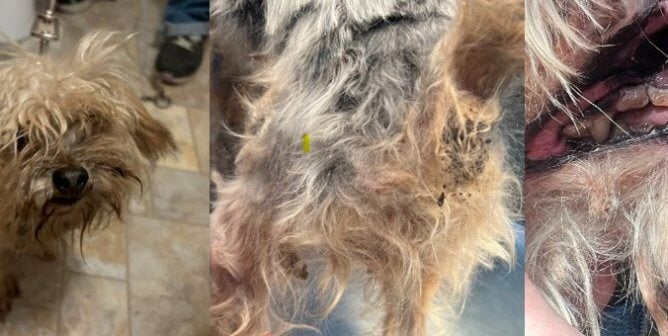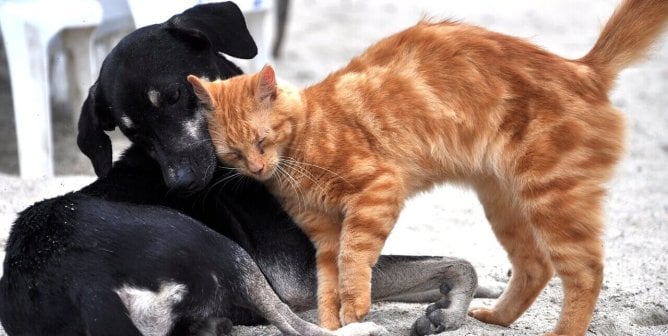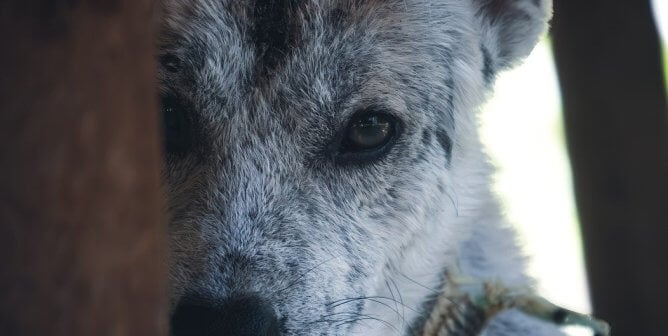Animal Hoarders: The Illness and The Crime
Animal hoarders—once described as “collectors” whose good intentions had gone awry—are now recognized as individuals whose mental illness or compulsion can cause criminal behavior with horrific consequences for animals, the hoarders’ families, and their communities.
The Animal Hoarder: A Profile
According to Dr. Gary J. Patronek, V.M.D., Ph.D., “[H]oarders are by definition oblivious to the extreme suffering, obvious to the causal observer, of their animals.”1
There are four characteristics indicative of hoarding behavior:
- Hoarders amass a large number of animals.
- They fail to provide for the animals’ most basic physical and social needs, including food, water, shelter, veterinary care, and sanitary living conditions.
- They offer excuses for or deny the abysmal living conditions of their animals (and sometimes even their children).
- They persist in accumulating and controlling animals.2
“That someone could love animals but be so immeasurably cruel to them sounds paradoxical,” says Dr. Randall Lockwood, retired senior vice president of forensic sciences and anti-cruelty projects for the ASPCA. “This is due to a failure in recognizing that suffering is actually one of the characteristics of compulsive animal hoarding.”3 This aspect of hoarding behavior is common among so-called “no-kill” shelters, where animals are often warehoused for years in deplorable conditions rather than provided with a peaceful and painless death by qualified technicians.
The companion animal overpopulation crisis enables hoarders to operate everywhere. According to the Animal Legal Defense Fund, there are likely at least 250,000 animal victims of hoarding annually across the country. “Animal hoarders can’t be pigeonholed,” explains Dr. Patronek.”We are seeing these behaviors in all socioeconomic strata; in very wealthy people and very poor people. We’ve seen it in men and women. We’ve seen it in married couples and inter-generational families.”4
A Fate Worse than Death
Every hoarder’s behavior translates into extreme, even fatal, neglect for animals in their custody. Severely crowded, filthy conditions make for easy transmission of intestinal worms, fleas, mange, ear mites, and other parasites as well as upper respiratory infections, parvo, distemper, and other diseases and can lead to feces-matted coats and urine burns. Hoarded animals are commonly deprived of basic veterinary care, including spaying and neutering, which causes their numbers of animals to increase or results in the separation of animals by sex and their confinement to small cages or bathrooms. Injuries—including broken limbs and wounds suffered in fights with other animals—go untreated and lead to infections. A study conducted by Dr. Patronek found that animals were reportedly found dead or suffering from “obvious disease or injury” in 80% of hoarding cases reviewed.5
Animals’ social needs are also ignored by hoarders. Dogs, who are pack animals and crave companionship, are often kept chained or in pens for years, and they often develop anti-social behavior and become highly fearful or aggressive. Cats deprived of human contact become skittish and—if allowed to reproduce—produce feral offspring.
The behavioral problems caused by physical and psychological neglect virtually eliminate the animals’ chances of being rehabilitated and adopted. Tragically, for many, euthanasia is the most humane option.
The Threat to Human Lives
Though the jeopardy that hoarders place animals in is clear, the Hoarding of Animals Research Consortium stated, “Hoarding of any sort poses significant health concerns for both occupants and nearby residents.”6
The close quarters common in hoarding situations may facilitate the transmission of diseases from animals to humans, such as toxoplasmosis, psittacosis, and salmonellosis. These diseases also threaten a hoarder’s human dependents, especially children and the elderly, who were present in more than half of hoarding cases surveyed in one study.7 High levels of ammonia may also be present in hoarder’s homes resulting from accumulated animal urine.
Because of these potential health hazards, some cities—including New York City and Seattle—have created interagency task forces that allow for adult and child protective services, animal control authorities, and health departments to work cooperatively on solutions in hoarding cases.8
Repeat Offenders
According to Dr. Elizabeth Berliner, the Janet L. Swanson director of shelter medicine at Cornell’s College of Veterinary Medicine, the relapse rate for animal hoarders is near 100%.9 An inadequate sentence for convicted animal hoarders—or one that is not enforced via regular official visits to ensure compliance—virtually guarantees a return to hoarding, along with the inevitable disastrous consequences for humans and animals alike. “The old adage,” says Dr. Patronek, is that hoarders “get another cat by the time they’re home from court.”10 Patronek found that nearly 60% of the animal hoarding cases that he reviewed involved recidivism.11
What You Can Do
Contact humane officials and the police if you suspect animals are being neglected or abused by their caretakers—even those who seem well intentioned. Neighbors’ complaints often cite the unsanitary conditions, odors, noise (e.g., barking), and huge numbers of rodents and insects commonly associated with animal hoarding situations. At least 57% of animal-hoarding cases are brought to authorities’ attention by a hoarder’s neighbors.12
Before you give an animal to any shelter, humane group, or “rescuer,” investigate thoroughly. Tour the facility yourself and accept no excuses for not being allowed to view the animals’ living quarters. Ask questions about animal care and adoption rates and policies. If anything seems off, leave and take the animal with you.
Write to officials and the media when hoarding cases are publicized and urge that hoarders be barred from all contact with animals and ordered to undergo a psychiatric evaluation and appropriate counseling or treatment. In 2001, Illinois became the first state to define and address animal hoarding in its anti-cruelty statute.13 The law requires convicted animal hoarders to undergo a mental evaluation and appropriate treatment.14 Rhode Island passed a similar law in 2017.15
Preventing hoarding and all other forms of cruelty to companion animals begins with fighting the overpopulation crisis. Ensure that your animals—and those of family, friends, and neighbors—are spayed or neutered.
References
1Gary J. Patronek, V.M.D., Ph.D., “The Problem of Animal Hoarding,” Municipal Lawyer, May/Jun. 2001.
2The Hoarding of Animals Research Consortium, “How Is Animal Hoarding Defined?” FAQs for Hoarding of Animals Research Consortium, accessed 17 Feb. 2019.
3Amelia Tate, “The Complex, Tragic Psychology Behind Animal Hoarding,”VICE, 7 May 2015.
4Lisa Esposito,”The Human Side of Animal Hoarding,” U.S.News & World Report, 11 Jan. 2017.
5Gary J. Patronek, V.M.D., Ph.D., “Hoarding of Animals: An Under-Recognized Public Health Problem in a Difficult-to-Study Population,” Public Health Reports 114 (1999): 81-86.
6Public Health for Hoarding of Animals Research Consortium, “Animal Hoarding And Public Health,” The Hoarding of Animals Research Consortium, accessed 9 March 2019.
7Hoarding of Animals Research Consortium, “Health Implications of Animal Hoarding,” Health & Social Work, 27 (2002): 125-136.
8Nina Bernstein, “So Much Clutter, So Little Room: Examining the Roots of Hoarding,” The New York Times, 4 Jan. 2004.
9Jolene Almendarez, “Cornell Vet: Recidivism in Animal Hoarding Is Nearly 100 Percent,” The Ithica Voice, 16 Dec. 2015.
10David R. Baker, “Cat Hoarders Are Usually Victims of Mysterious Obsession,” San Francisco Chronicle, 27 May 2001.
11Patronek, Public Health Reports.
12Patronek, Public Health Reports.
13Bridget M. Kuehn, “Lawmakers Tackle Animal Hoarding. States Look to New Laws to Address Animal Hoarders,” JAVMA News, 1 May 2003.
14Public Act 92-0454, State of Illinois, 92nd General Assembly, 21 Aug. 2001.
15An Act LC001610/SUB A, State of Rhode Island, General Assembly, 2 March 2017.








